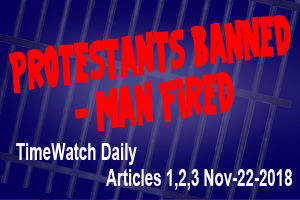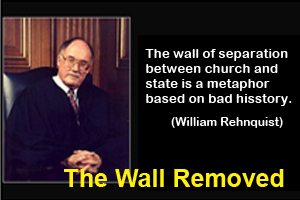
The New Rome - Part 1
TimeWatch Editorial
April 12, 2016
Published in Newsweek, August 12, 1991, on page 33 Yasser Arafat labeled America "the new Rome" because, as old Rome was the undisputed superpower of its age, America is now number one. Mohammed Yasser Abdel Rahman Abdel Raouf Arafat was a Palestinian leader. He was Chairman of the Palestine Liberation Organization (PLO), President of the Palestinian National Authority (PNA), and leader of the Fatah political party and former paramilitary group, which he founded in 1959. Originally opposed to Israel's existence, he modified his position in 1988 when he accepted UN Security Council Resolution 242.
But Arafat was and is not the only person who considers America the new Rome. In the Economist March 21st 2002, under the title “The New Rome Meets the New Barbarians” is found the following paragraph:
“It is true that no nation since Rome has loomed so large above the others, but even Rome eventually collapsed. Only a decade ago, the conventional wisdom lamented an America in decline. Bestseller lists featured books that described America's fall. Japan would soon become “Number One”. That view was wrong at the time, and when I wrote “Bound to Lead” in 1989, I, like others, predicted the continuing rise of American power. But the new conventional wisdom that America is invincible is equally dangerous if it leads to a foreign policy that combines unilateralism, arrogance and parochialism.” The Economist, “The New Rome Meets the New Barbarians”
Cullen Murphy is the author of a book entitled: Are We Rome?The Fall of an Empire and the Fate of America. Noel Malcolm in his review of that book, published in the Daily Telegraph on March 9, 2008 says:
“Cullen Murphy, an author of stylish think-pieces in Atlantic Monthly and Vanity Fair, has become obsessed with the resemblances between the present-day US and ancient Rome. The big similarity, of course, is in geopolitics: at its height, the Roman Empire was a military superpower which dominated much of what is tendentiously called 'the known world' (known by whom? - answer: by people in the Roman Empire). Rome's imprint on that large part of the world was not just military. The material culture of Roman life - art and architecture, clothes and food, even including the Romans' disgusting fermented fish sauce - had an overwhelming allure for almost everyone who became part of the empire, or was in regular contact with it.” Noel Malcolm, the Daily Telegraph, Is America the New Rome?
Murphy compares the global influence of the United States to the influence and control of Rome. But his comparison is very much like the comparison of others. Steven Strauss, writing for AlterNet, on December 26, 2012 calls his article “8 Striking Parallels between the U.S and the Roman Empire” says:
“Similar to the late Roman Republic, the US – for the past 100 years — has either been fighting a war, recovering from a war, or preparing for a new war: WW I (1917-18), WW II (1941-1945), Cold War (1947-1991), Korean War (1950-1953), Vietnam (1953-1975), Gulf War (1990-1991), Afghanistan (2001-ongoing), and Iraq (2003-2011). And, this list is far from complete. Rome’s late Republic used various methods to reduce the power of common citizens. The GOP has so effectively gerrymandered Congressional districts that, even though House Republican candidates received only about 48 percent of the popular vote in the 2012 election — they ended up with the majority (53 percent) of the seats.” Steven Strauss, “8 Striking Parallels between the U.S and the Roman Empire.”
These men are but a few of those who see the similarities. Yet, their vision is not guided by prophetic or for that matter Biblical influences. This makes their vision even more profound! Imagine if they could see the connection of Revelation 13 verses 11 and 12.
Revelation 13:11 - And I beheld another beast coming up out of the earth; and he had two horns like a lamb, and he spake as a dragon.
Revelation 13:12 - And he exerciseth all the power of the first beast before him, and causeth the earth and them which dwell therein to worship the first beast, whose deadly wound was healed.
The beast in Revelation 13: 11 here described is the United States. the two horns represent political and religious freedom. The Lamb-like appearance is a description of the Christlike beginning of the nation, a place where those who seek to worship God in peace found refuge. The dragon speech describes the change that comes to the original freedoms that used to exist in the United States. It describes the control of the state by the church and the fact that the United States will cause the earth to worship the Papacy.
The first beast referred to in Revelation 13: 12, is found in Revelation 13 verses 1 to 3 which describes Papal Rome.
Revelation 13:1 - And I stood upon the sand of the sea, and saw a beast rise up out of the sea, having seven heads and ten horns, and upon his horns ten crowns, and upon his heads the name of blasphemy.
Revelation 13:2 - And the beast which I saw was like unto a leopard, and his feet were as [the feet] of a bear, and his mouth as the mouth of a lion: and the dragon gave him his power, and his seat, and great authority.
Revelation 13:3 - And I saw one of his heads as it were wounded to death; and his deadly wound was healed: and all the world wondered after the beast.
As you shall see in part 2 of “The New Rome,” ancient Rome, as described in Revelation 13: 1-3 has bequeathed to the United States elements of its character.
Cameron A. Bowen







